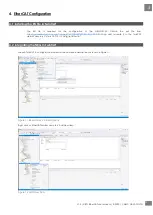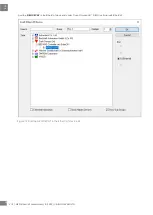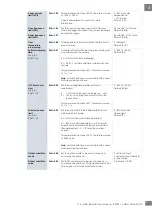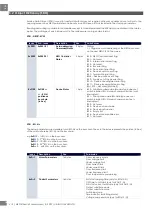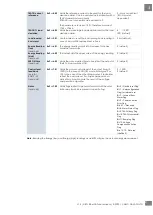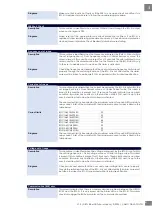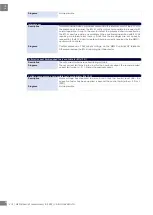
25
V1.0 | NRG EtherCAT User Manual | © 2022 | CARLO GAVAZZI LTD.
EN
Output with Phase angle firing mode @ 66% control level
The advantage of Phase angle over the other switching modes is its precise resolution of power. However, Phase angle
generates excessive harmonics vs other switching modes. With Phase angle control, the flickering of IR heaters is
eliminated completely.
Soft Starting
Soft starting is only available on the RGx1P.N solid state relays. It is utilised to reduce the start-up current of loads having
a high cold to hot resistance ratio such as short wave infrared heaters. The tyristor firing angle is gradually increased in
order to apply the power to the load smoothly. Soft start can be applied with all the other available switching modes
(ON/OFF), Burst, Distributed full cycle, Advanced full cycle and Phase angle. When applied with phase angle, the soft
start will stop at the set control level whereas for the other switching mode the soft start will stop untill fully ON. Soft start
shall be applied upon power up and after a number of non-firing cycles settable by the user (OFF time to soft start
setting(.
Soft start with Phase angle
Soft start with ON/OFF, Burst , Distributed full cycle and Advanced full cycle firing modes
There are two type of soft start modes on the RGx1P..CM..N:
Soft start with time mode
The soft start will apply the power smoothly to the load over a time period of maximum 25.5s. This is settable via the
communication system (Soft start ramping time setting).
Soft start with current limit mode
This soft start mode works with a current limit set by the user via the communication. The soft start time will adapt such
that the set current limit is not exceeded, and the soft start occurs in the shortest amount for time. The recommended
setting for the current limit is 1.2 - 1.5 times the nominal current. The maximum settable current limit is 2 times the rated
current of the RG..CM..N variant used. If the current limit is set too low and the current limit is reached, a warning will be
notified(Soft start current limit reached).
Voltage compensation
When voltage compensation is utilised, the output power on the output of the solid state relay will remain balanced
despite any voltage deviations from normal readings. The algorithm uses a reference voltage set by the user via the
communication (Voltage compensation setting) to compute the compensation factor. A new control level is calculated
by applying the compensation factor on the control level from the main controller.
The compensation factor (C.F.) applied on the control level is calculated as follows:
𝐶𝐶. 𝐹𝐹. = �
𝑅𝑅𝑅𝑅𝑅𝑅𝑅𝑅𝑅𝑅𝑅𝑅𝑅𝑅𝑅𝑅𝑅𝑅 𝑉𝑉𝑉𝑉𝑉𝑉𝑉𝑉𝑉𝑉𝑉𝑉𝑅𝑅
𝑀𝑀𝑅𝑅𝑉𝑉𝑀𝑀𝑀𝑀𝑅𝑅𝑅𝑅𝑀𝑀 𝑉𝑉𝑉𝑉𝑉𝑉𝑉𝑉𝑉𝑉𝑉𝑉𝑅𝑅
�
2
If the calculated control level after the compensation factor is applied is beyond the control level limits (0 & 100%), the
absolute limit will be applied (0 or 100%) and a warning message will be triggered (Voltage compensation not possible).

